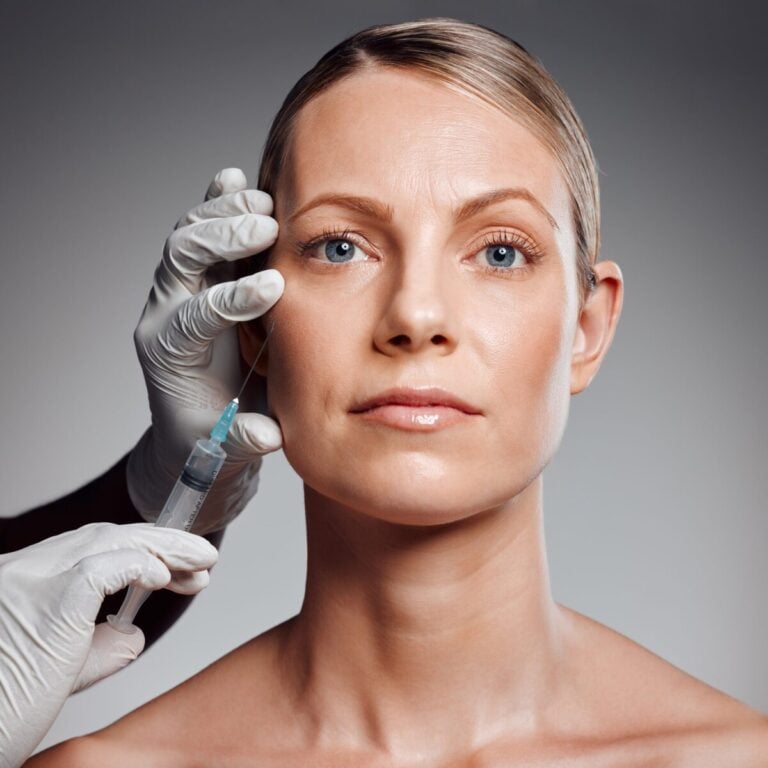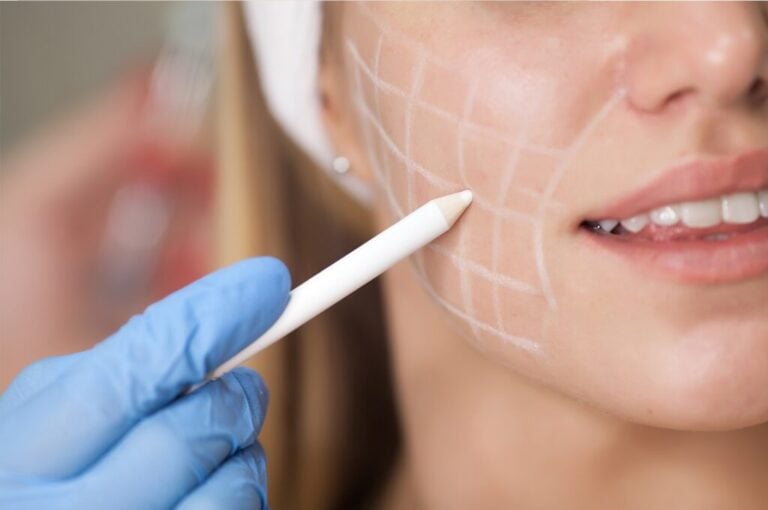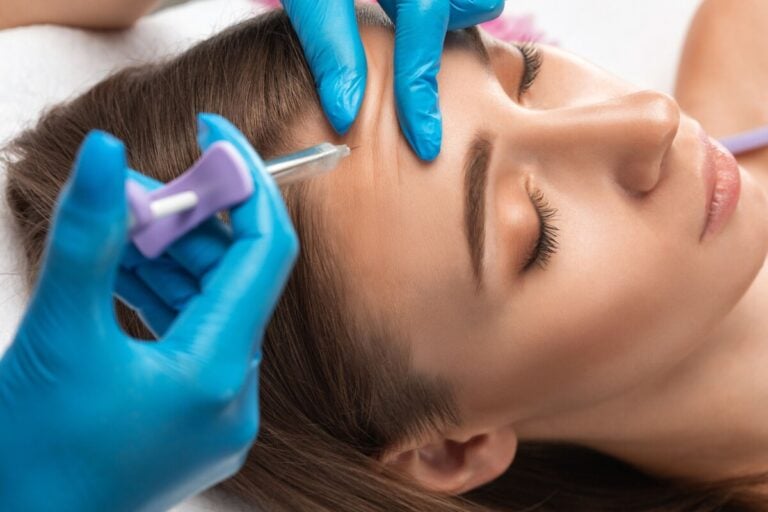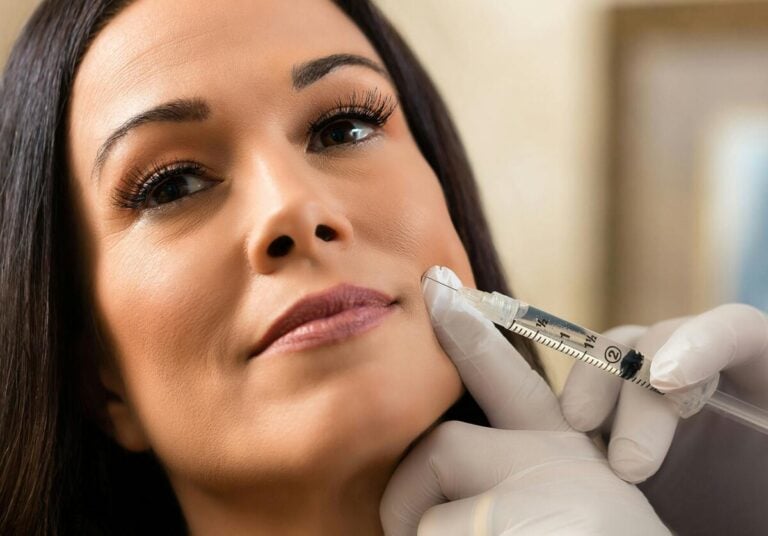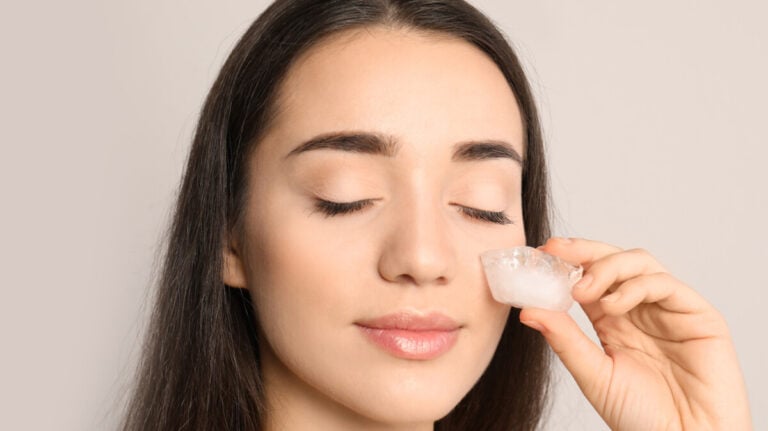In the modern world, we can no longer imagine cosmetology without “beauty injections”. Injection techniques have become an integral part of the lives of a huge number of people. Effectiveness, accessibility and safety in skillful hands have promoted this type of correction of age-related changes to the pedestal of techniques of choice in the fight against skin problems.
It is important for the patient to understand some aspects of certain methods of such medical intervention. Because most people don’t even understand their meaning. And this is a help for deceiving patients by unscrupulous cosmetologists. In my clinical practice, I often meet patients who do not know what exactly I will use as a drug of choice, what risks and consequences it has, and what the benefits and predicted results are. It is very important at the very beginning of the procedure to take informed voluntary consent from the patient for the medical procedure and tell all the details of the process.
Any invasive method of intervention has a number of risks, which, by experienced specialists, are calculated and minimized as much as possible. It is important to understand that the skin is a protective barrier that protects us from the environment. And even with a needle, we destroy this barrier. Moreover, the skin itself is an organ that also has a number of its own diseases, and an attentive doctor should know them when working with this organ so as not to aggravate the underlying disease. From the banal, if we see a spot on the skin, and we have suggestive thoughts about oncology, then it would be logical to refer the patient to an oncologist-dermatologist, and not poke a needle there, increasing the risks of developing the oncological process, up to metastases.
Further, a huge number of vessels and nerves pass behind the skin, and without knowing the anatomy of a particular area, large vessels can be damaged. If they are damaged, at best, the patient will end up with a hematoma, at worst, a deterioration in blood supply, so-called ischemia, and death of the organ or tissue that the damaged vessel supplied with blood.
Hematomas can also be dangerous. It all depends on the size. Large hematomas can compress surrounding organs and tissues, disrupting their blood supply, which will lead to necrosis. Since we have damage to the skin, under certain conditions and factors, an infection can get into the hematoma, and all this can fester.
In case of damage to the nerve ending, at best the patient will experience acute pain, and at worst, a violation of the sensitivity and range of motion of the area of the human body that this nerve innervated.

In addition to the fact that we looked at the general dangers of invasive needle procedures, there are a number of popular particular complications from the administration of certain drugs.
When using preparations based on hyaluronic acid, it is important to take into account the dense texture of the preparation, which, if administered excessively, can put pressure on surrounding tissues. Also, such hyaluronic acid preparations can migrate from areas of high density to more loose areas, or under the influence of other forces such as gravity or muscle contractions.
For example, when working in the eye area, with improper injection technique and a number of additional factors, hyaluronic acid can migrate into the tissue behind the eye and cause compression of the optic nerve, leading to blindness. And only a series of urgently taken medical measures can cope with this complication. If the drug is used incorrectly, you can also get a pronounced contour defect in the patient. If this defect is not eliminated in time, then surgical manipulation will subsequently be required, which already has its own risks and complications, not to mention the additional financial burden.
Preparations based on botulinum toxin also have their own characteristics; it is important to understand which muscles can be immobilized and which cannot. How to distribute the drug correctly. Given certain factors and the onset of complications, the best that can be obtained is asymmetry of the motor muscles, and in the worst case, loss of organ function or disruption of work with all the consequences – temporary disability.
As for mesotherapy, it is important to know exactly the composition of the drugs, since, for the most part, they are all multi-component. And with insufficient history taking, you can get an acute allergic reaction, which has the prospect of ending unfavorably for the patient.
Based on the peculiarities of working with invasive, injection methods in cosmetology, we confidently, according to the logic of things, highlight contraindications to their use: any kind of infectious diseases at the moment, exacerbations of chronic diseases.
Use great caution if you have a history of autoimmune diseases, even in remission. Oncological diseases. Injuries that are still undergoing rehabilitation. Pregnancy, and, with caution when breastfeeding. Intolerance to drugs or their components. Allergic reactions to medications and other substances.

Use caution when taking medications to treat an underlying disease. It is important to look at drug interactions and predict the risks of complications.
Childhood. It is necessary to take into account the doctor’s qualifications to work with children, as well as, within the framework of evidence-based medicine, studies that would show the safety of using drugs in pediatric patients.
All this is only a small part of the features of carrying out invasive interventions in patients in injection cosmetology. And only a qualified doctor can adequately assess all the risks and make the procedure safe for a person while eliminating all risks of complications.
In search of youth and beauty, many turn to invasive procedures such as injections and the administration of various drugs. However, before deciding to take such a step, it is important to understand the possible dangers and contraindications that may accompany these rejuvenation methods. Let’s discuss some of them.
Dangers and contraindications of invasive procedures
Weakened immune system
Any colds make the body more vulnerable. With a weakened immune system, the risk of complications from invasive procedures increases significantly. Therefore, doctors recommend refraining from such procedures during colds or other viral diseases.
Oncology
Cancer survivors are advised to refrain from invasive procedures until complete recovery and for at least five years after remission. This is due to the fact that the introduction of foreign substances into the body can become additional stress for an already weakened body.
Autoimmune diseases
Any autoimmune disease in which the immune system attacks the body’s own cells is a serious contraindication to invasive procedures. The body’s reaction to the introduction of foreign substances can be unpredictable and lead to serious complications.
Epilepsy and bronchial asthma
If you have epilepsy or bronchial asthma, you must be especially careful when performing invasive procedures. If a seizure or asthmatic attack occurs during the procedure, this can lead to serious complications and a threat to the patient’s life.
Pregnancy and lactation
Pregnancy and lactation are also contraindications to invasive procedures. The introduction of foreign substances into the body can negatively affect the health of the unborn child or nursing mother. After the end of lactation, it is recommended to wait at least 2-3 months to restore hormonal levels before performing invasive procedures.
Other contraindications
Blood clotting disorders and infectious diseases in the acute stage are also serious contraindications to invasive procedures. In addition, it is necessary to take into account factors such as allergic reactions to active substances and the characteristics of the patient’s general condition.
Danger zones and preventive measures

Patients often turn to cosmetologists with a request to smooth out creases between the eyebrows caused by active facial expressions. However, instead of using a toxin to relax the muscles, some specialists inject filler into the area. This is extremely dangerous, since the area between the eyebrows is complex in terms of anatomy and blood circulation.
Filler injected into the area between the eyebrows without first relaxing the muscle can lead to serious complications. When the muscle contracts, the filler begins to shift, forming bumps and irregularities on the facial skin. Moreover, if filler enters the supraorbital artery, it can cause an embolus, which can lead to vision loss.
Experts strongly recommend avoiding injection of fillers into the area between the eyebrows and preferring a toxin to relax the muscles. Work in this area requires special care and knowledge of facial anatomy. Incorrect manipulations can have irreparable consequences, including loss of vision.
In addition to injecting fillers into the glabellar area, there are other dangerous procedures that can have serious consequences for patients. One of these procedures is working with threads. When the specialist is in the wrong layer or too deep, there is a risk of paresis of the facial nerve or its branches.
Facial nerve palsy can lead to loss of sensation and motor activity in the facial area. Recovery from such damage can be difficult or even impossible and requires referral to neurosurgeons.
In addition, it is important to mention the possibility of embolism when injecting filler into a vessel. Carrying out an aspiration test before the procedure allows you to determine whether the needle is in the vessel. This is an important preventive measure that helps to avoid serious complications such as blockage of the vessel and embolism.
The importance of performing an aspiration test before injecting fillers is discussed in the medical world, and this should be a mandatory practice for all cosmetic professionals to avoid risks.
Caring for beauty and youth should be safe and conscious. Before deciding to undergo invasive procedures, it is important to carefully assess your health status and consult with an experienced specialist and take into account all risks and contraindications.
Compliance with contraindications will help to avoid serious complications and maintain health and beauty for many years.
Complications that a surgeon encounters after beauty injections
Unfortunately, despite a wide range of cosmetic products and the introduction of new techniques, I, as a plastic surgeon, increasingly encounter complications after cosmetic procedures. These are mainly the consequences of improper use of hyaluronic acid-based fillers or the use of untested drugs, which ultimately leads to migration of the filler, the formation of a capsule around it, subsequently causing inflammation and even systemic reactions throughout the body.

The area of greatest risk is the infraorbital area, where cosmetologists try to get rid of the nasolacrimal groove using fillers. The use of hyaluronic acid preparations in this area is, in principle, unfavorable: in 70% of cases, a “ridge” is formed along the edge of the lower eyelid due to the penetration of filler. Once introduced into the superficial layers, the filler becomes covered with a fibrous membrane and becomes hard to the touch; it can only be removed surgically.
More severe complications also occur: embolism of hyaluronic acid particles in the arteries of the orbital region, which, if detected late, can lead to blindness. This complication occurs when a vessel is damaged during the administration of the drug, so placement of fillers in the orbital area must be performed extremely carefully and pretentiously with a deep knowledge of the anatomy.
Migration of fillers also occurs everywhere; patients with such complications come to a plastic surgeon when the migrating filler begins to cause discomfort, become inflamed and deform the contours of the face. For such patients, an ultrasound scan of the skin and soft tissues of the face is always performed first, followed by an MRI if necessary.
Surgical removal of filler remnants is not an easy task, since the fibrous capsule is tightly adhered to the surrounding tissues, and sometimes nerves and blood vessels can get into this conglomerate. As a safe alternative to the injection of hyaluronic acid fillers, I recommend facial lipofilling – taking the patient’s own adipose tissue from the area of the anterior abdominal wall and introducing the already processed autologous fat into the facial areas.
Your own fat definitely does not cause inflammatory reactions, it is more plastic and lies softly on the facial tissue. According to the “like for like” principle, autofat takes root well in the facial area, where subcutaneous fat is well developed. Lipofilling is also carried out not only for aesthetic problems, but for the correction of scars, due to its plasticity and safety.



